During my last trip to Walt Disney World, I had lunch with Disney Historian Mark Matheis from the Disney Institute. It was Friday, July 17th – a pretty momentous day in the history of the Disney Parks. On July 17, 1955, Ronald Reagan hosted the live telecast on ABC of Disneyland’s opening in Anaheim, CA. July 17, 1989 saw the dedication of Splash Mountain in Disneyland; the soft opening for Walt Disney World’s version occurred on July 17th three years later. The Magic Kingdom’s opening of Splash Mountain always stuck in Mark Matheis’ mind because that was the day Mark auditioned to become a Traditions instructor [Traditions is the orientation program for new Cast Members]. During the middle of the audition, someone ran in exclaiming, “They just opened Splash Mountain to the guests”, and the entire group traipsed out to ride the brand new attraction – July 17, a good day. So in honor of Splash Mountain’s birthday read on to learn more about the history and development of the attraction.
The original concept for Splash Mountain at Disneyland came to Imagineer Tony Baxter while commuting between his home in the Anaheim Hills area and the Imagineering studios in Glendale, CA. Tony was trying to increase foot traffic to an underutilized area of Disneyland – Bear Country. At the same time, in Tomorrowland, the America Sings theater was about to close. America Sings was an attraction opened for the Bicentennial, but after seven years its attendance was lacking. However, inside this theater were 114 stunning audioanimatronic animals, many designed by “Disney Legend” Marc Davis. During his 40+ years with the Disney company, Marc Davis was one of Disney’s “Nine Old Men”, and as a film animator he created beloved characters including Cinderella, Cruella deVille, Sleeping Beauty, and Tinker Bell, to name a few. When Marc Davis became an Imagineer he designed characters for many shows and attractions such as the Enchanted Tiki Room, the Haunted Mansion, and Pirates of the Caribbean. The audioanimatronic figures in America Sings needed a home, and Tony Baxter pitched the idea to use these animals in a new attraction located in Bear Country called “Zip-a-Dee River Run.”
When the idea was pitched, the Imagineers argued how other amusement parks had log flume rides; guests were asking for and expected that type of ride. However, the rebuttal was “they have it, that’s why Disney shouldn’t. We’re Disney, and we’re unique.” The Imagineers eventually won out, and once the general concept for the attraction was approved, the challenge was to take a standard amusement park flume ride, and create a story that was so much more than just a 52 foot drop. Theming and story was what would make this flume ride different from the others.
The theming for “Zip-a-Dee River Run” was based on the 1946 film Song of the South because of the familiar characters and rich setting. Song of the South’s characters of B’rer Rabbit, B’rer Fox, and B’rer Bear were in the parks since opening day so they were familiar to the guests. The story of Song of the South was based on the Uncle Remus stories by Joel Chandler Harris, and set in the Deep South after the Civil War. Disney Historian Mark Matheis commented, “there was a vibrant setting for those stories.” Marc Davis was an animator on the film, and responsible for the design and animation of one of the main characters, B’rer Rabbit. In addition, the 114 audioanimatronic animals Marc Davis created as an imagineer and rescued from the closed America Sings attraction would fit nicely in the Song of the South setting. Therefore, Song of the South as a theme created a synergy for the new attraction. An animator who worked on the 1946 film was now an Imagineer who created many of the animatronic figures [albeit for a different attraction a decade earlier]. Song of the South allowed a blending of old and the new as well as a blending of motion picture with theme park.
It was Michael Eisner who suggested the name change of the attraction from “Zip-a-Dee River Run” to Splash Mountain. Director Ron Howard’s film Splash (1984) with Tom Hanks and Daryl Hannah was recently released by the Touchstone Pictures division of Disney Studios, and Michael Eisner wanted to help promote the film with the new Disneyland attraction. Originally, Michael Eisner wanted to add a mermaid to Splash Mountain, but the Imagineers pushed back saying a mermaid would totally disrupt the Song of the South theming. However, the name Splash Mountain did tie in well with the other mountain attractions of Disneyland including the Matterhorn and Space Mountain, and proved to be a better fit for the new ride than “Zip-a-Dee River Run”.
Disneyland’s Splash Mountain opened in 1989 in the old Bear Country area – now renamed Critter Country because of the addition of Splash Mountain and all of its audioanimatronic “critters”. The new ride was such an immediate hit, Michael Eisner started to think about developing the attraction for the other Disney Parks – Walt Disney World in Florida and Tokyo Disneyland. As the plans developed, Imagineers at Tokyo Disneyland suggested Japanese culture was not comfortable with the single file seating used in the California version of Splash Mountain. To address this cultural issue, Tokyo Disneyland changed the log configuration to side-by-side seating. It was decided that the side-by-side seating made sense for Florida’s version as well because of the large number of Japanese visitors to that park. In addition, the side-by-side seating raised the capacity of Splash Mountain with just a slight widening of the flume allowing more guests per hour to experience the ride.
Construction of Splash Mountain at Walt Disney World began in the early 1990’s and required a total reconfiguration of Frontierland. The old train station was torn down, moved and used as a visual buffer between the more realistic architecture, landscape, and theming of the Wild West Frontierland. Splash Mountain at Walt Disney World would break the Wild West theme – because it had a Deep South setting. When the Frontierland train station was demolished and moved, it was the first and only time in Walt Disney World history the Walt Disney World Railroad could not run. Part of the track was removed as Imagineers changed the elevation of the area to allow people to walk under the train tracks to get back to the eventual Splash Mountain queue. Construction workers got the Walt Disney World Railroad up and running as quickly as they could, but the train could not go all the way around the park. For several months the train ran back and forth between Main Street, USA and Mickey’s Starland (now Mickey’s Toontown Fair). [Note – the train would run backwards from Main Street, USA to Mickey’s Starland.] However, once the new portion of the train opened you could see right into a portion of the “Zip-a-Dee Lady” riverboat scene inside the Splash Mountain show building.
Splash Mountain opened at Walt Disney World July 17, 1992 exactly three years after the ride opened at Disneyland. The ride has certainly become a favorite of many visitors to Walt Disney World, is a great way to cool off on a hot summer day, and is a particular favorite of our family. I’d like to thank Mark Matheis for his help in the preparation of this article, and encourage everyone to go take a ride on Splash Mountain in honor of its birthday.
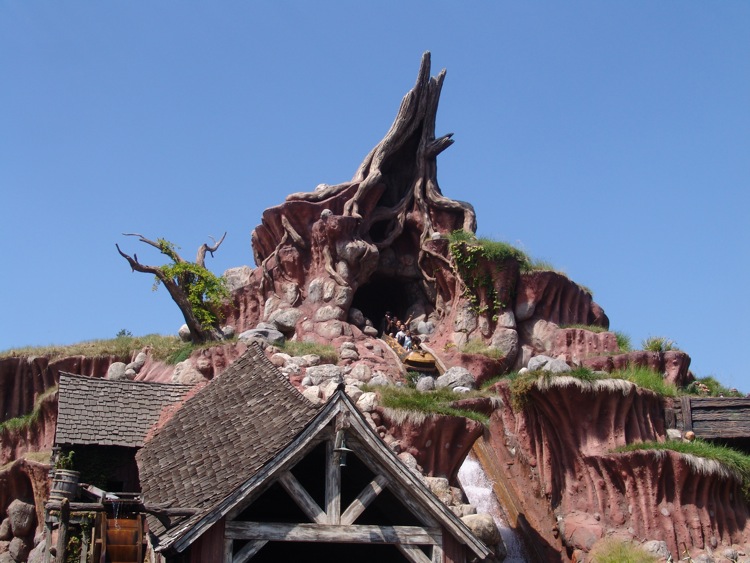
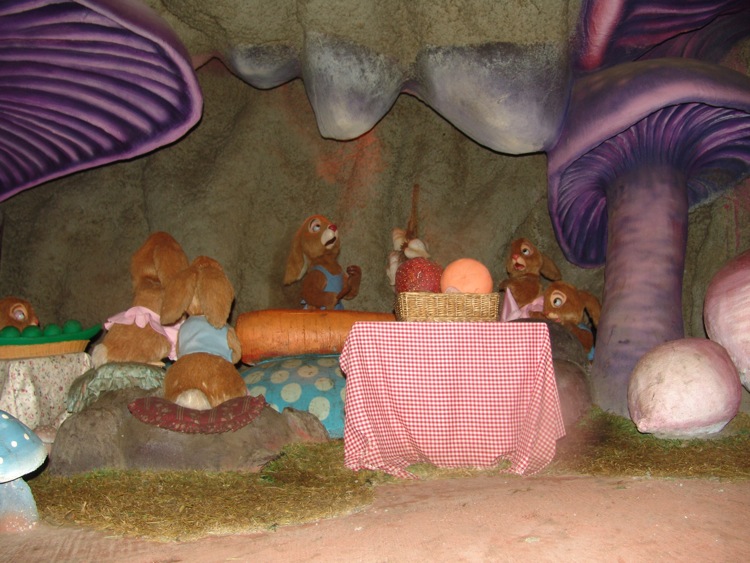
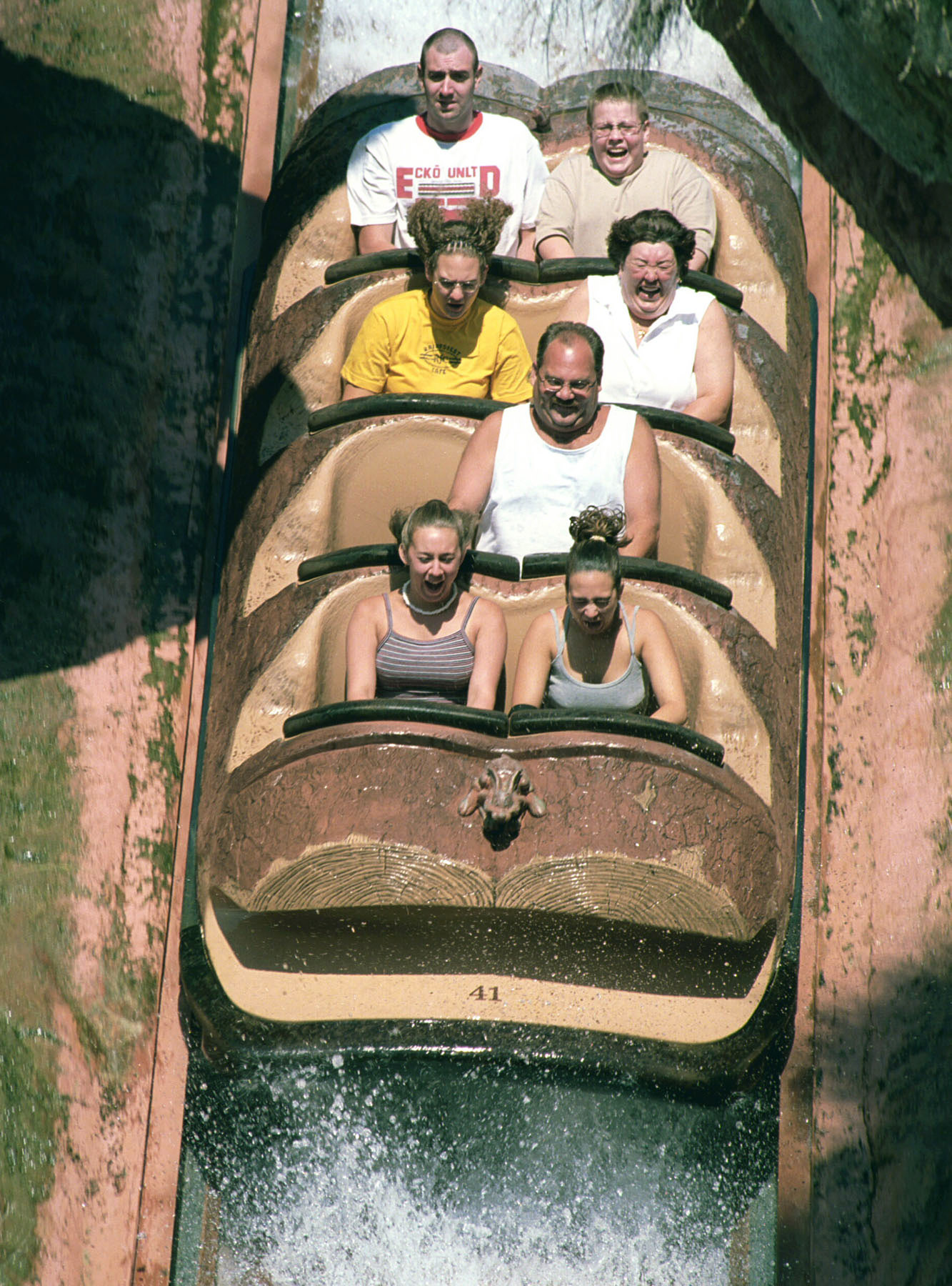
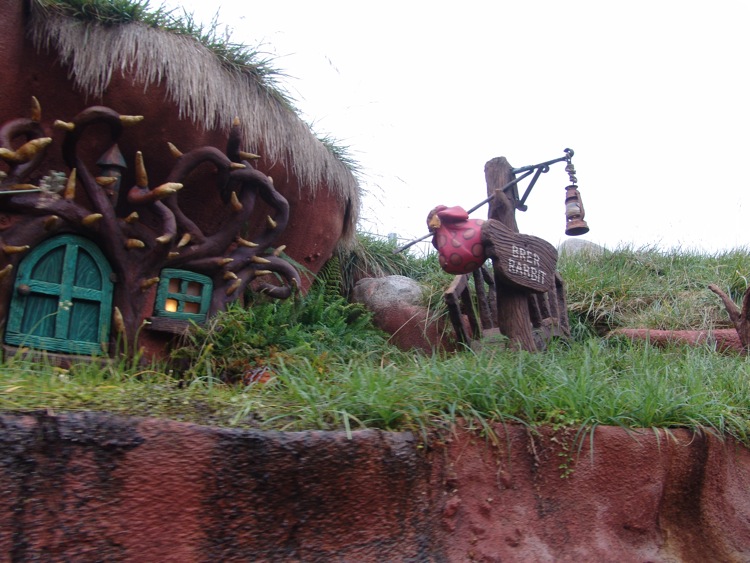
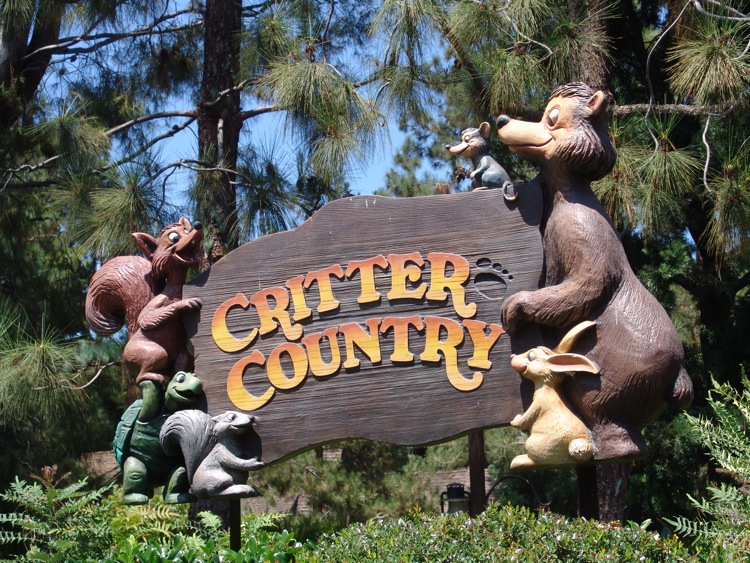
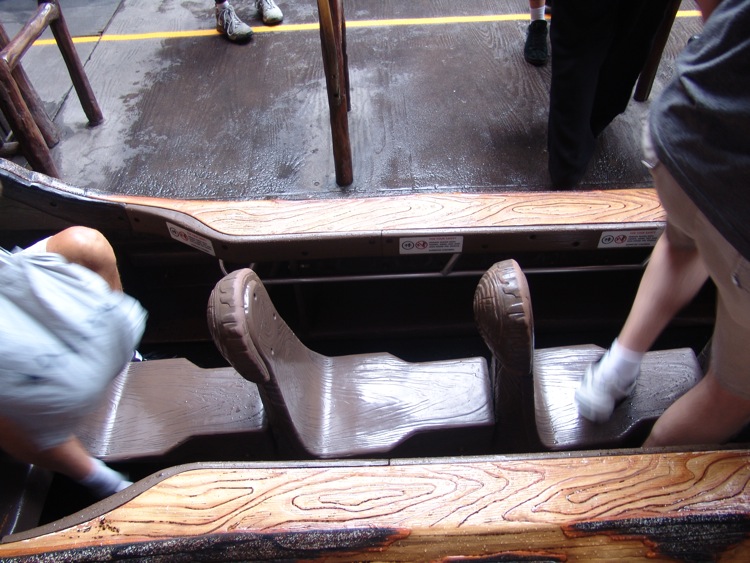
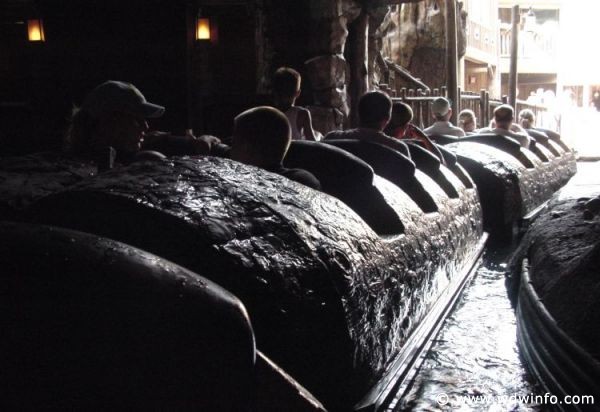
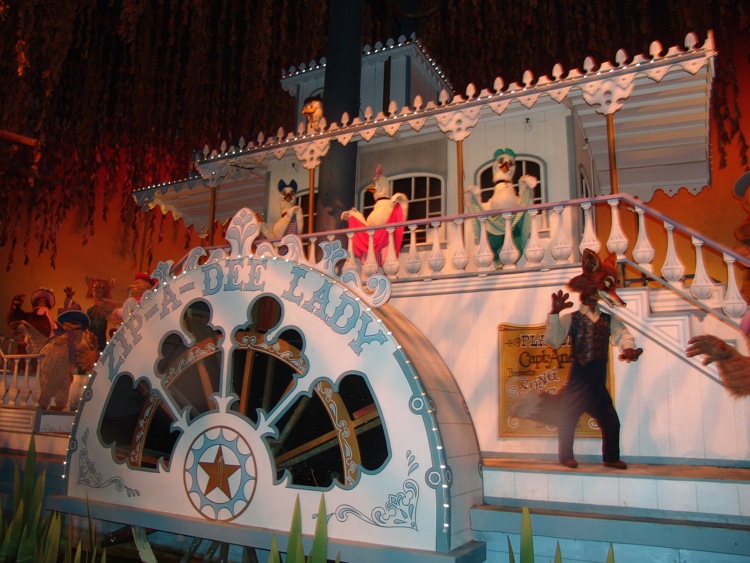
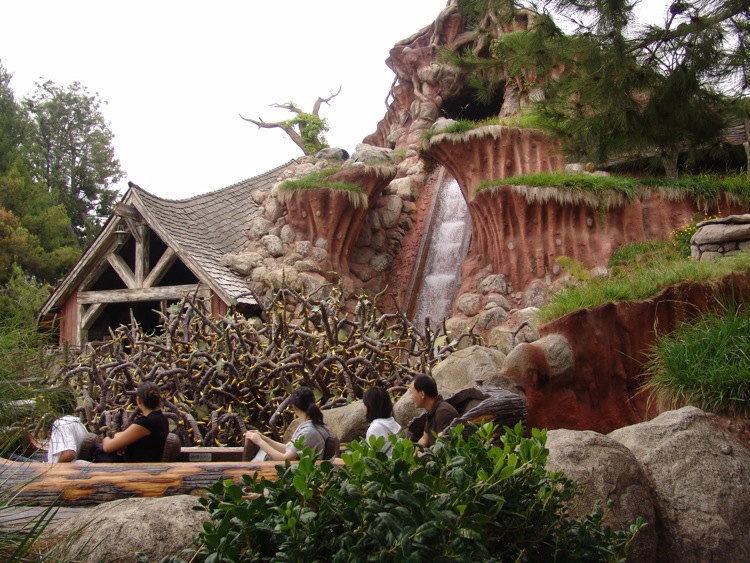
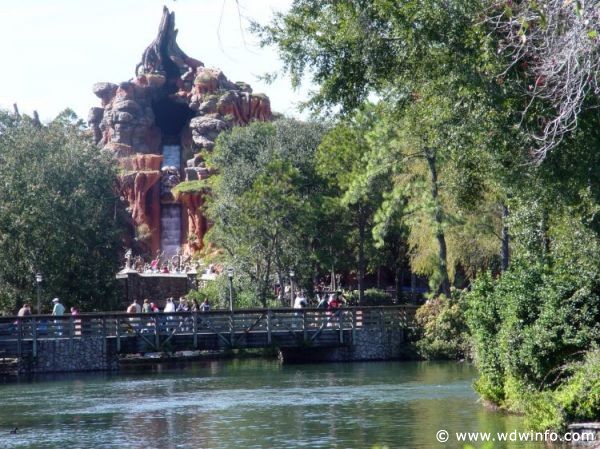
Leave a Reply